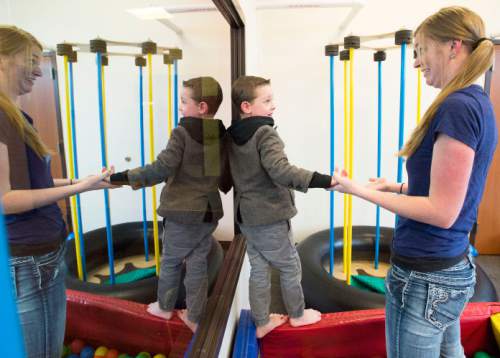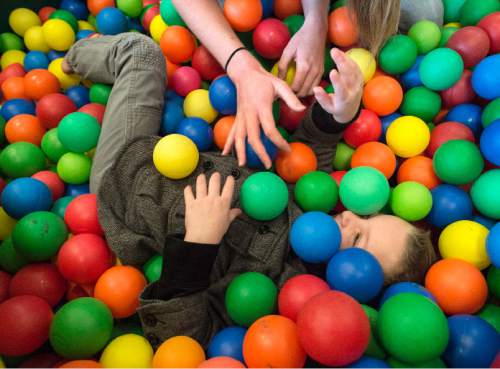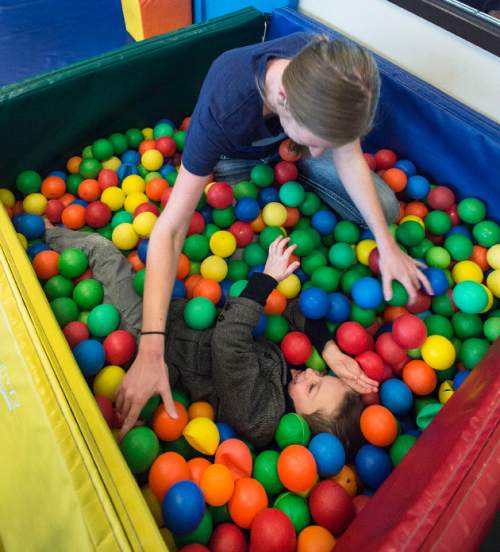This is an archived article that was published on sltrib.com in 2016, and information in the article may be outdated. It is provided only for personal research purposes and may not be reprinted.
Utah's autism rate has held steady as the national rate also has leveled off, reports the Centers for Disease Control and Prevention.
It's a stark difference from 2011, when researchers found autism's prevalence had doubled in a six-year window.
"We've plateaued," said Deborah Bilder, an assistant professor of psychiatry at the University of Utah and a principal investigator on the study.
One in roughly 58 Utah 8-year-olds have been diagnosed with autism spectrum disorder, according to the review of 2013 data. It's a slight dip since 2010 — when the diagnosis rate was 1 in 54 — but researchers say the decline is not statistically significant.
It is the first year that the national average also has held steady.
Researchers don't know exactly why the rate has slowed. But they have a hunch.
"It has to do with awareness," Bilder said. The previous surge, she believes, reflects the headway Utah has made toward accurately diagnosing autism, with more doctors, families and schools keeping an eye out for signs of the disease that has no known cause.
Researchers have typically poured their resources into monitoring the data. But that is changing.
Bilder and her colleagues won't participate in the next round of this CDC research. They will continue to track Utah numbers on their own, but want to turn their attention to identifying the disease in children as early as preschool. Scientists say intervention in toddlers can vastly improve how they function throughout life.
A December study showed progress, finding doctors were evaluating children at 27 months, as opposed to 32 months. The American Academy of Pediatrics has recommended kids be screened at 18 months old and again at age 2.
Though Utah's rate has held steady, it continues to hover above average. The Beehive State ranked fourth highest in research prevalence behind New Jersey, North Carolina, and part of Maryland. Eleven states are participating in the program.
Utah's boys continue to fit the autism criteria more than four times higher than girls.
A low rate continues among black children in the state. But that result may be skewed by Utah's small African American population.
And despite Utah researchers pointing to a plateau, the national level hasn't held steady long enough for the Centers for Disease Control and Prevention to draw the same conclusion.
Research has not revealed a cause of autism, which has behavioral symptoms. Physicians believe genetics has a role that environment may limit or increase the risk.
Twitter: @anniebknox









